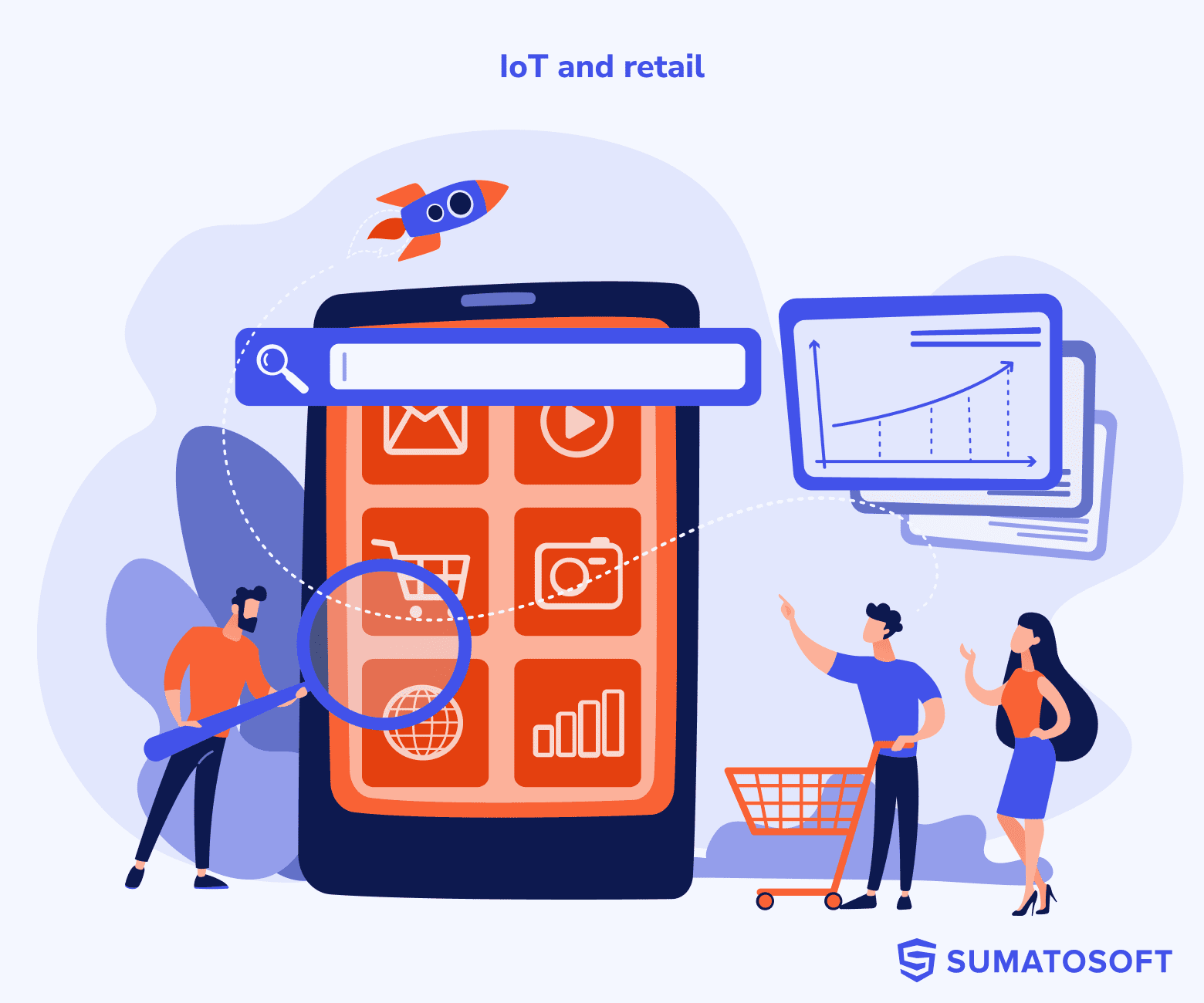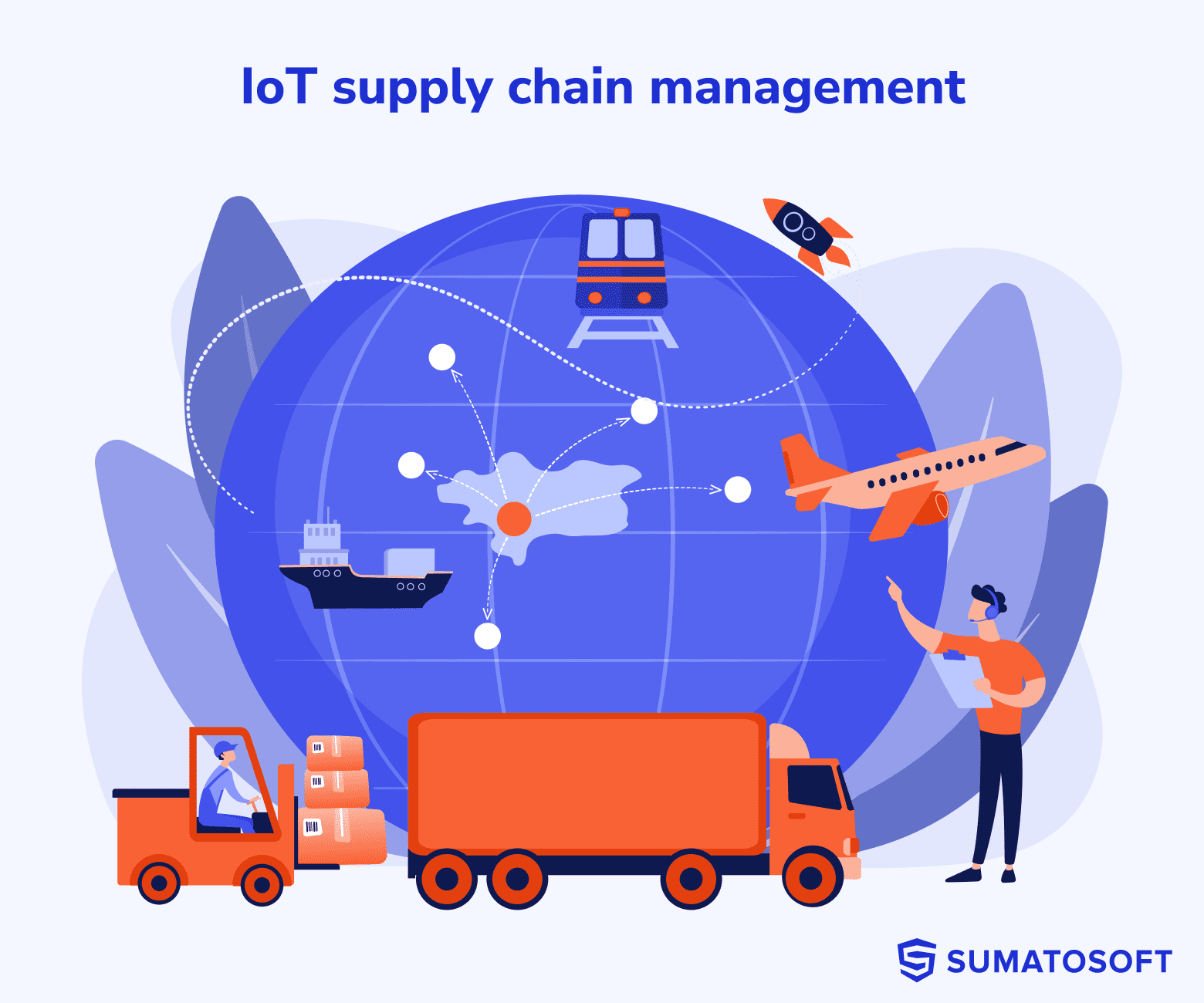2024’s Top IoT Devices Transforming the Healthcare Landscape
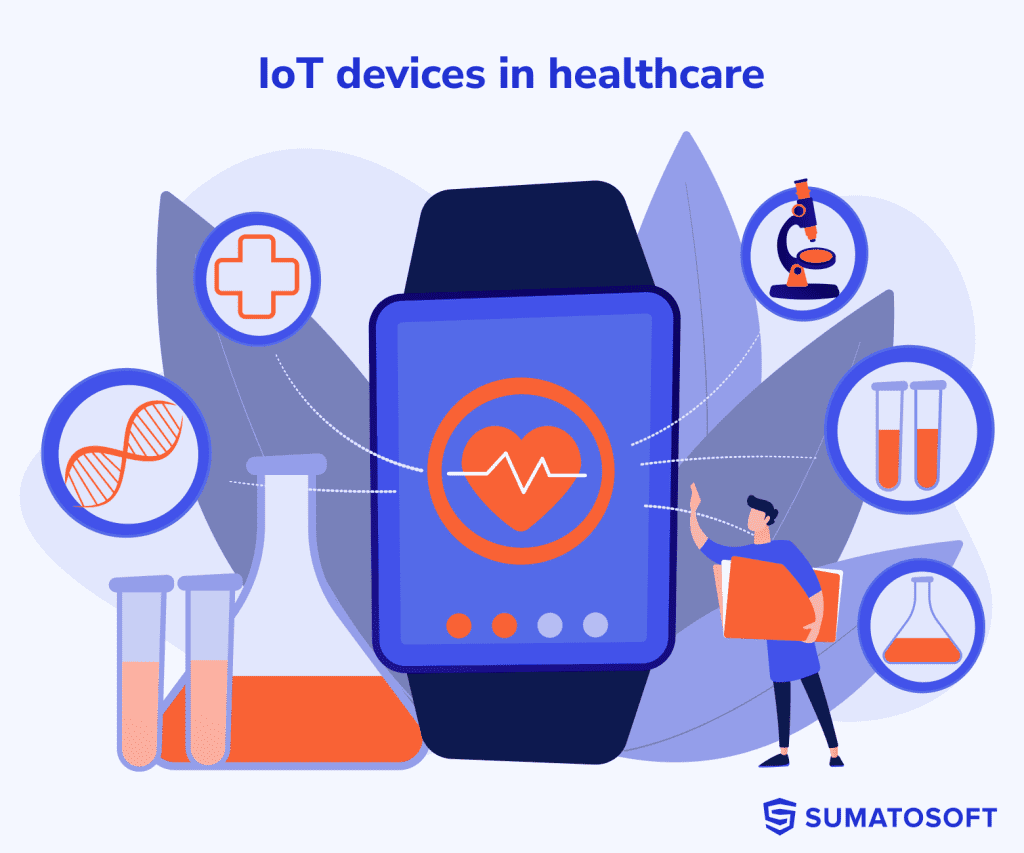
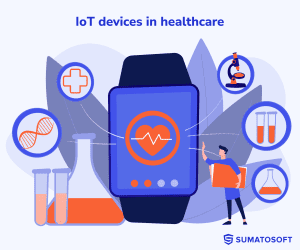
The Internet of Things (IoT) is no longer a novel term; it’s a transformative force reshaping industries, including healthcare. This article aims to trace the evolution of IoT devices within the healthcare sector, offering a comprehensive categorization of the various types of devices and their applications. From wearable devices for monitoring vitals to organ-on-a-chip systems revolutionizing medical research, the scope of IoT in healthcare is expansive and continually evolving.
Historical Context of IoT in Healthcare
Before the advent of IoT, healthcare technology largely relied on stand-alone systems that required manual operation. Devices like pagers, basic infusion pumps, and first-generation MRI machines set the stage for what would later become a digitally interconnected healthcare ecosystem. But this leap wasn’t made overnight, it was a long journey of people and industries adopting IoT devices for healthcare needs. Here is the milestones on this pass:
Introduction of Electronic Health Records (EHRs)
Around the late ’90s and early 2000s, EHRs transformed data storage and retrieval in healthcare, laying the groundwork for interconnected systems.
Wearable Health Monitors
The debut of wearable health monitors like Fitbit and Apple Watch in the early 2010s popularized the concept of continuous health monitoring.
FDA Approval of IoT Medical Devices
Devices like Medtronic’s IoT-connected insulin pumps and cardiac monitors received FDA approval in 2020, marking a critical step in IoT’s clinical validation.
Telemedicine Surge
The COVID-19 pandemic 2020-2024 catalyzed the adoption of remote patient monitoring tools and telemedicine solutions, solidifying IoT’s role in healthcare.
Market Dominance by Specific Brand
Apple, with about 146 million wearable device shipments in 2022, has mainly established its dominance through the Apple Watch. Similarly, Xiaomi’s Mi Band fitness tracker has achieved significant success, underscoring the competitive landscape of the wearable market.
The Taxonomy of IoT in Healthcare: Devices, Uses, and Examples

As we have seen in the previous section, IoT devices become increasingly integrated into medical practices. These devices can be categorized into distinct types, each serving unique functions within healthcare systems. In this section, we will delve into six key categories of IoT devices in healthcare: wearable devices, implantable devices, in-hospital devices, remote monitoring tools, diagnostic devices, and specialized sensors. For each category, we will discuss its specific usage in healthcare and provide examples of devices that fall under that category.
Wearable Devices
Wearable devices have become increasingly popular in the realm of consumer electronics. Statista claims that back in 2014, 28.8 millions electronical wearable devices were shipped across the globe. In 2022, this number was 492.1 millions, almost 17 times more that 8 years ago.
These devices are primarily designed for continuous monitoring of vital statistics, activity levels, and general health metrics. In healthcare, these devices serve two distinct but interconnected purposes: out-of-the-clinic patient monitoring and personal health tracking.
- Out-of-the-clinic patient monitoring – medical-grade wearables provide real-time data collection that can be crucial for monitoring ongoing health conditions, post-surgical recovery, or elderly care.
- Personal health tracking – consumer-grade wearables are better suited for general monitoring of wellness metrics rather than medical diagnosis or treatment.
Range of metrics they monitor:
- Health vitals – heart rate, blood pressure, and body temperature.
- Activity metrics – steps taken, distance covered, stairs climbed.
- Other metrics – sleep quality, calories burned, menstrual tracking, and stress levels.
Examples of Wearable Devices in Healthcare
Fitness Trackers
These measure a range of health metrics such as steps taken, calories burned, and sleep patterns. More relevant for personal use but can be used for activity tracking in patients undergoing physical rehab.
Examples are: Fitbit and Garmin.
Smartwatches
Beyond telling time, they can monitor heart rate, detect falls, and sometimes even perform ECGs. Both personal use and out-of-the-clinic patient monitoring (especially for cardiac patients).
Brands like Apple Watch and Samsung Galaxy Watch are leaders in this space.
Wearable ECG Monitors
These offer more specialized cardiac monitoring and often come in the form of patches or straps. Primarily used for out-of-the-clinic patient monitoring, particularly for cardiac care.
Examples are AliveCor, KardiaMobile, QardioCore.
Pulse Oximeters
These are fingertip devices that measure blood oxygen levels and are particularly useful for patients with respiratory issues. Both in out-of-the-clinic patient monitoring (for chronic respiratory conditions) and personal use (for general wellness).
Examples are Masimo Rad-5v and iHealth Air.
Smart Blood Pressure Monitors
Used for systolic and diastolic blood pressure readings. These devices can serve both personal health tracking and out-of-the-clinic patient monitoring for individuals with hypertension or other cardiovascular concerns.
Examples are Omron, Withings.
Temperature Monitors
These wearable patches or bracelets continuously monitor body temperature, useful for infants, elderly, or post-surgery monitoring.
Good representative are TempTraq, Fever Scout.
Glucose Monitors
These devies are usually invasive. The patient pricks the finger with a niddle and measure the glucose level. Still, there are so non-invasive devices that use radio waves or ultrasonic and electromagnetic to measure glucose level.
Examples are Glucowise and GlucoTrack.
Neurological Monitors
These are often headbands or caps that monitor brain waves and can be used for diagnosing or monitoring conditions like epilepsy, sleep disorders, or other neurological issues. Still, there are some devices primarily for home use.
Examples in Clinic are B-Alert X-Series and Emotiv EPOC+.
At-home examples: Muse, NeuroSky.
Implantable Devices: Monitoring from Within
Implantable devices are a category of healthcare technology that offer the advantage of continuous monitoring and even treatment for a range of conditions. These devices are generally placed within the body via surgical procedures and are designed to operate autonomously for extended periods.
Cardiac Pacemakers
They monitor heart rate and rhythm and are generally used in clinical settings for managing conditions like bradycardia and heart failure.
Notable examples include Medtronic’s Azure pacemaker with BlueSync technology and Boston Scientific’s ACCOLADE MRI pacemakers.
Neurostimulators
They offer another layer of specialized care, mainly in clinics, by measuring electrical activity in targeted nerves or brain regions. They deliver electrical simulation to specific nerves of brain regions and are used for conditions like epilepsy and chronic pain, with Medtronic’s InterStim Therapy and Boston Scientific’s Vercise DBS system being prime examples.
Examples are Medtronic’s InterStim Therapy, Boston Scientific’s Vercise DBS system.
Continuous Glucose Monitors (CGMs)
Then there are continuous glucose monitors (CGMs) like Dexcom’s G6 and Abbott’s FreeStyle Libre, which have primarily found their place in home settings. These devices monitor blood glucose levels, reducing the need for frequent finger-pricking and making diabetes management more convenient and effective.
Spinal Cord Stimulators
Mainly used in clinical settings for chronic pain management, spinal cord stimulators help to mask pain signals before they reach the brain. Leading examples include Boston Scientific’s Spectra WaveWriter and Nevro’s Senza System. Although effective, these devices should be carefully considered due to potential risks like surgical complications and device malfunction.
Cochlear Implants
Transformative for those with severe hearing loss, these implants are surgically placed in the inner ear and are usually programmed in a clinical setting. Brands like Cochlear and MED-EL have developed cutting-edge versions like the Nucleus 7 and SYNCHRONY 2 cochlear implants, respectively.
Intraocular Pressure Sensors
For the management of glaucoma, these sensors are implanted in the eye to continually monitor intraocular pressure. The devices offer both clinical and home-based monitoring capabilities, with Sensimed’s Triggerfish being a notable example.
Implantable Drug Delivery Systems
Used primarily in clinical settings, these devices offer targeted, controlled drug release for conditions ranging from chronic pain to cancer. Medtronic’s SynchroMed II pump is one such example, offering adjustable delivery rates for more personalized treatment.
Stationary Devices: The Cornerstones of In-Clinic Care
Stationary devices form the backbone of traditional healthcare settings like hospitals and clinics. These devices, now IoT-enabled, range from diagnostic machinery to treatment equipment, all designed to stay in a fixed location but offer unprecedented connectivity. In this section, we will delve into various types of stationary devices, their applications, and real-world examples to demonstrate how they have revolutionized in-clinic patient care.
Smart Beds
Traditional hospital beds have evolved into smart beds that can adjust patients’ positions for optimal comfort and treatment efficacy. Metrics like weight, temperature, and movement are often monitored. Stryker’s ProCuity Bed and Hill-Rom’s Centrella Smart+ Bed are examples that offer such advanced functionalities. These beds are typically found in hospitals and long-term care facilities.
Automated Dispensing Systems
These systems are akin to high-tech vending machines that dispense medication after proper authorization. They’re instrumental in reducing medication errors and automating inventory tracking. Pyxis MedStation, by BD, is a popular choice in many healthcare settings.
EKG Machines
Modern EKG machines are now IoT-enabled to send real-time data to healthcare providers, aiding quicker diagnosis and treatment plans for cardiac issues. Brands like GE Healthcare and Philips offer top-tier EKG systems primarily used in clinical settings for advanced monitoring.
Ventilators
Internet-connected ventilators can be controlled remotely and offer real-time data monitoring. The Hamilton Medical G5 and Draeger Evita Infinity V500 are examples that are extensively used in intensive care units.
MRI and CT Scanners
Diagnostic devices like MRI and CT scanners have also become IoT-enabled, allowing for better coordination and data sharing between healthcare providers. Siemens and General Electric offer some of the most cutting-edge connected scanners.
Dialysis Machines
These have evolved to become IoT-enabled, allowing for more robust data tracking and potentially even remote adjustments. Fresenius Medical Care and Baxter are leading providers of such smart dialysis machines, primarily used in specialized clinics.
Remote Monitoring Tools: Bridging the Gap Between Clinic and Home
Remote monitoring tools are IoT devices designed to maintain a continuous health data stream between patients and healthcare providers, primarily when in-person visits are not feasible. While there may be some overlap with wearable devices, which are often used for similar monitoring purposes, remote monitoring tools generally focus on specialized, targeted health metrics and are more commonly employed in transitional care units, long-term care facilities, and at-home settings. In this section, we will explore various types of remote monitoring tools, their specific applications, and provide real-world examples.
Blood Pressure Monitors
IoT-enabled blood pressure monitors like Omron’s Platinum BP5450 or Withings BPM Connect allow for data to be sent directly to healthcare providers or stored in the cloud for later analysis. These devices are typically used at home for regular monitoring of hypertensive patients.
Smart Scales
Devices like the Fitbit Aria 2 or Withings Body+ not only measure weight but also provide metrics like BMI, body fat percentage, and muscle mass. These are mostly used at home for general wellness or specific weight-related health programs.
Smart Pill Dispensers
Smart pill dispensers, such as MedMinder or Hero, have emerged as a vital tool for enhancing medication adherence, particularly for patients with complex medication regimens. These devices are often equipped with intelligent software that allows for remote monitoring of medication schedules. Programmed to dispense pills at predetermined times, they can alert caregivers via connected mobile apps if a dose is missed. While not directly involved in diagnosis or treatment, their role in ensuring medication compliance is critical for both in-home and long-term care settings.
Specialized Cameras
Certain cameras can be used for remote wound care or dermatological exams, transmitting high-resolution images to healthcare providers for evaluation. Products like the MolecuLight i:X are particularly useful for wound management in both clinical and home settings.
Glucose Monitoring Systems
Remote monitoring tools such as the FreeStyle Libre system allow for continuous glucose monitoring, transmitting data to both healthcare providers and patients. These are predominantly used at home but can also be useful in clinical settings for specialized care.
Home EKG Monitors
Devices like the KardiaMobile by AliveCor enable patients to conduct EKG tests at home and share the data with their healthcare providers. These are useful for cardiac patients who require frequent monitoring.
Pulse Oximeters
Devices like the iHealth Air or Masimo’s MightySat offer remote monitoring of blood oxygen levels, particularly useful for patients with chronic respiratory issues. These are generally used at home but can also be utilized in out-of-the-clinic patient monitoring.
Hospital Operation Tools: The Behind-the-Scenes Heroes
Hospital operation tools may not directly interface with patients, but they are critical in supporting the smooth operation of healthcare facilities. These devices leverage IoT technology to facilitate everything from asset tracking to environmental control, thereby directly impacting patient care by improving efficiency and safety. Let’s examine some notable types of these operation-centric IoT devices, their applications, and examples of each.
Asset Tracking Systems
Real-Time Location Systems (RTLS) like the Stanley Healthcare AeroScout or CenTrak’s solutions are employed to track the location of valuable assets—ranging from medical equipment to even staff—in real-time, ensuring that resources are always optimally utilized.
Environmental Monitoring
Devices like the Elpro Ecolog-Net system monitor factors such as temperature, humidity, and air quality in various hospital areas including operating rooms and storage facilities for sensitive materials. This ensures compliance with safety standards and enhances patient well-being.
Hand Hygiene Monitoring
Systems like GOJO’s SMARTLINK or Ecolab’s Hand Hygiene Compliance Monitoring System automatically detect handwashing events among healthcare staff, a crucial step in infection control.
Waste Management Systems
Intelligent waste disposal systems like the Enevo solution use sensors to signal when waste containers are full, optimizing the waste collection process and reducing costs.
Research & Development Tools: Pioneering Tomorrow’s Healthcare Solutions
Research and Development (R&D) tools in healthcare embody the epitome of innovation, offering groundbreaking ways to study, diagnose, and potentially treat medical conditions. While these tools are mainly confined to research labs and academic settings, their implications for the future of healthcare are monumental. In this section, we explore a range of R&D-focused IoT devices, their applications, and provide real-world examples.
Organ-on-a-Chip
Microfluidic cell culture chips such as those developed by Emulate, Inc. and CN Bio simulate the activities and physiological response of entire organs. These chips are revolutionizing drug testing and disease modeling by providing a more advanced form of in vitro (lab-based) organ models.
Genetic Analyzers
IoT-connected genetic analyzers, like Illumina’s sequencing systems, are helping to decode the mysteries of the human genome, aiding everything from genetic research to personalized medicine.
Robot-Assisted Surgery Systems
Surgery systems like da Vinci offer comprehensive assistance for surgeons in complex procedures.
Where Have We Known All These?
Well, we are quite enthusiastic about IoT and its implementation across various industries. At SumatoSoft, we are deeply committed to providing IoT development services to small, medium, and large companies. The healthcare industry is one of our focus areas – this is a sector complex in its challenges but unparalleled in its significance. The last projects we developed in healthcare are:
Smart Cuff Workout Application
A mobile application designed to determine suitable workouts based on real-time pulse and pressure levels, all measured through a smart cuff. The app features GDPR-compliant security measures and seamless device integration.
Blood Sugar Monitoring Sensor for a North American Healthcare Firm
We’ve partnered with a North American healthcare technology firm that specializes in blood sugar monitoring. Together, we’ve developed an under-the-skin sensor aimed at individual consumers. The sensor continually tracks blood sugar levels, filling a critical gap in the market for real-time, continuous glucose monitoring. To complement the sensor, we created a user-friendly mobile application, allowing users to easily monitor their blood sugar levels on the go.
Reasons for Choosing SumatoSoft in IoMT Collaborations
- Expertise in IoMT – with 12 years in the market of IoT development services and a portfolio of successful IoMT ventures, SumatoSoft leverages its profound knowledge to navigate the complexities of healthcare projects effectively.
- Holistic device integration – our work spans a diverse range of devices, from consumer wearables like fitness trackers and smartwatches to specialized medical equipment such as glucose monitors and ECG machines. We prioritize smooth data transmission and system interconnectivity.
- Regulatory compliance mastery – understanding that compliance is non-negotiable in healthcare, we diligently adhere to international norms and regulations such as HIPAA, HL7, FHIR, and GDPR, ensuring the utmost integrity and safety of patient data.
- Emphasis on security – beyond meeting industry security standards, we employ rigorous security testing, robust monitoring, and logging. We also keep our software updated to mitigate emerging security threats and continually upgrade our cybersecurity skills.
- Manufacturer partnerships – our alliances with device manufacturers enhance our solution offerings. These partnerships offer our clients a unique opportunity to both prototype and produce their healthcare devices.
- Transparent and honest communication – we maintain open lines of communication through weekly updates, live demos, and multiple contact avenues. We proactively send monthly timesheet reports, offer risk assessments, provide insightful decision-making advice, and help in cost optimization.
Get in touch with us to deliver your next IoMT project!
Conclusion
- IoT devices in healthcare span multiple categories: Wearables, Implantables, Stationary Devices, Remote Monitoring Tools, and Hospital Operation Tools.
- Emerging categories like “Research & Development Tools” point to future advancements.
- Wearables dominate the market with devices like fitness trackers and smartwatches.
- Significant market growth was observed, with 490 million device shipments in 2022, led by brands like Apple and Xiaomi.
- Challenges like data security and regulatory approvals remain to be addressed.
- Telemedicine and specialized devices signal a future of personalized, data-driven healthcare.
Let’s start
If you have any questions, email us info@sumatosoft.com
